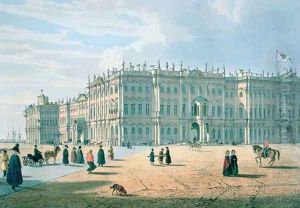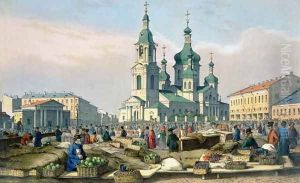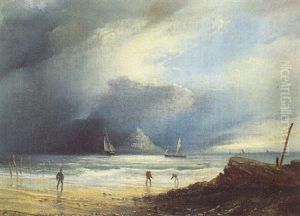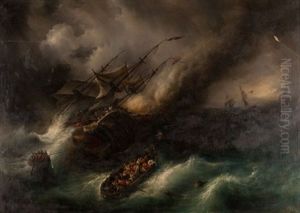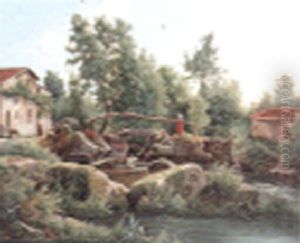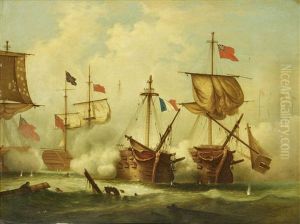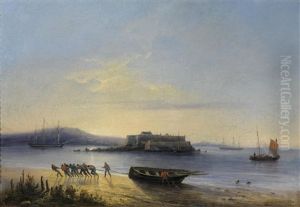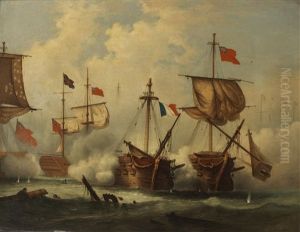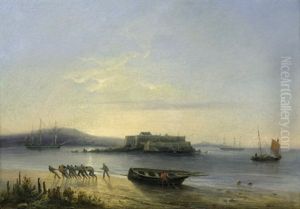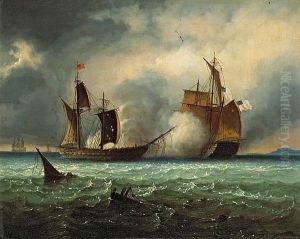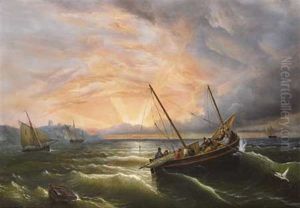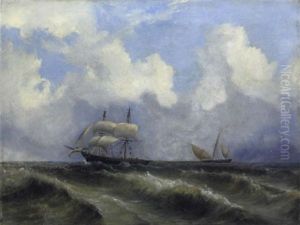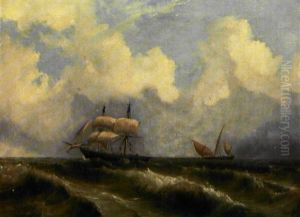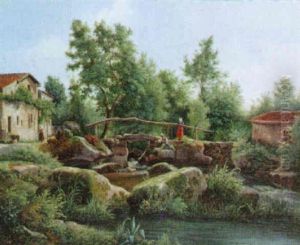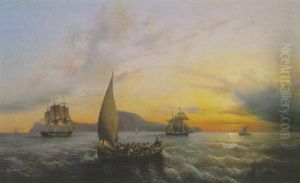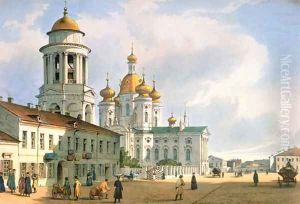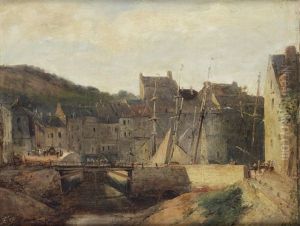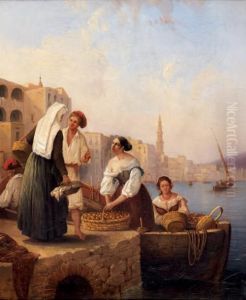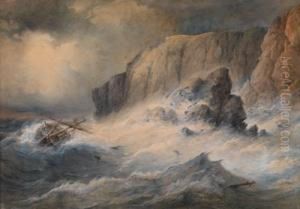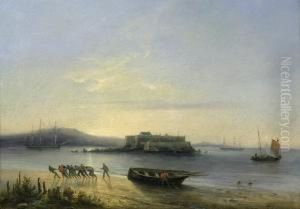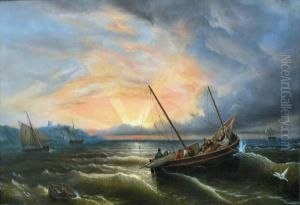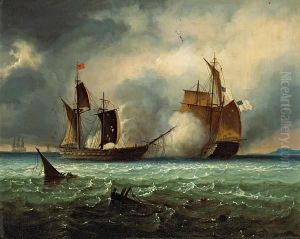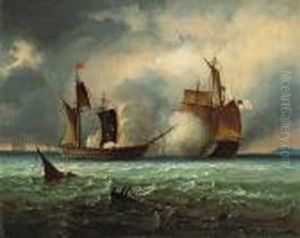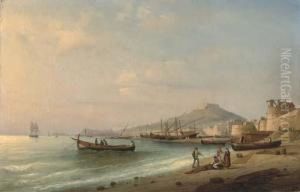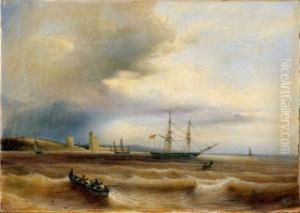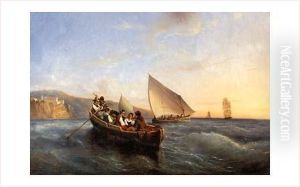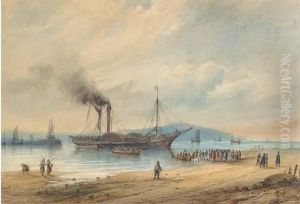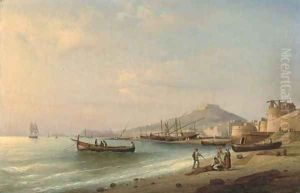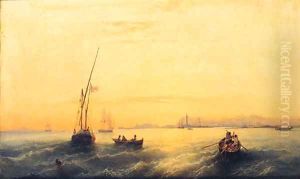Ferdinand Victor Perrot Paintings
Ferdinand Victor Perrot was a French painter recognized for his contributions to the genre of landscape and marine painting during the 19th century. Born in 1808, Perrot's artistic journey began in an era marked by the romantic movement, which significantly influenced his approach to art. He was particularly known for his detailed and delicate portrayal of coastal and maritime scenes, capturing the transient beauty of nature with a remarkable sensitivity.
Perrot's career unfolded during a period that saw a burgeoning appreciation for landscape painting, a genre that was gaining autonomy from the historical and religious subjects that had dominated European art for centuries. His works often depicted serene and idyllic scenes, imbued with a sense of tranquility and a deep reverence for the natural world. This thematic focus reflected the romantic movement's fascination with nature as a source of inspiration and spiritual renewal.
Despite his talent and the quality of his work, Ferdinand Victor Perrot remains a somewhat obscure figure in art history, overshadowed by his contemporaries. His life was relatively short, as he passed away in 1841 at the age of 33. During his brief career, however, he managed to contribute significantly to the landscape genre, leaving behind a body of work that continues to be appreciated by art enthusiasts and scholars alike.
Perrot's paintings are characterized by their meticulous attention to detail and the use of light to create depth and atmosphere. He had a keen eye for capturing the changing moods of the sea and the sky, which lent his works an emotive quality that resonated with viewers. Although specific details about his training and personal life are scarce, it is evident from his art that he possessed a profound understanding of the technical aspects of painting, as well as a deep emotional connection to the subjects he portrayed.
Today, Ferdinand Victor Perrot's works can be found in various art collections and museums, serving as a testament to his skill and dedication as an artist. His contribution to the landscape and marine painting genres remains significant, providing a window into the natural beauty and complexity of the 19th-century French coastline and beyond. His legacy, though not as widely recognized as that of some of his peers, underscores the importance of landscape art in capturing and conveying the sublime aspects of the natural world.
